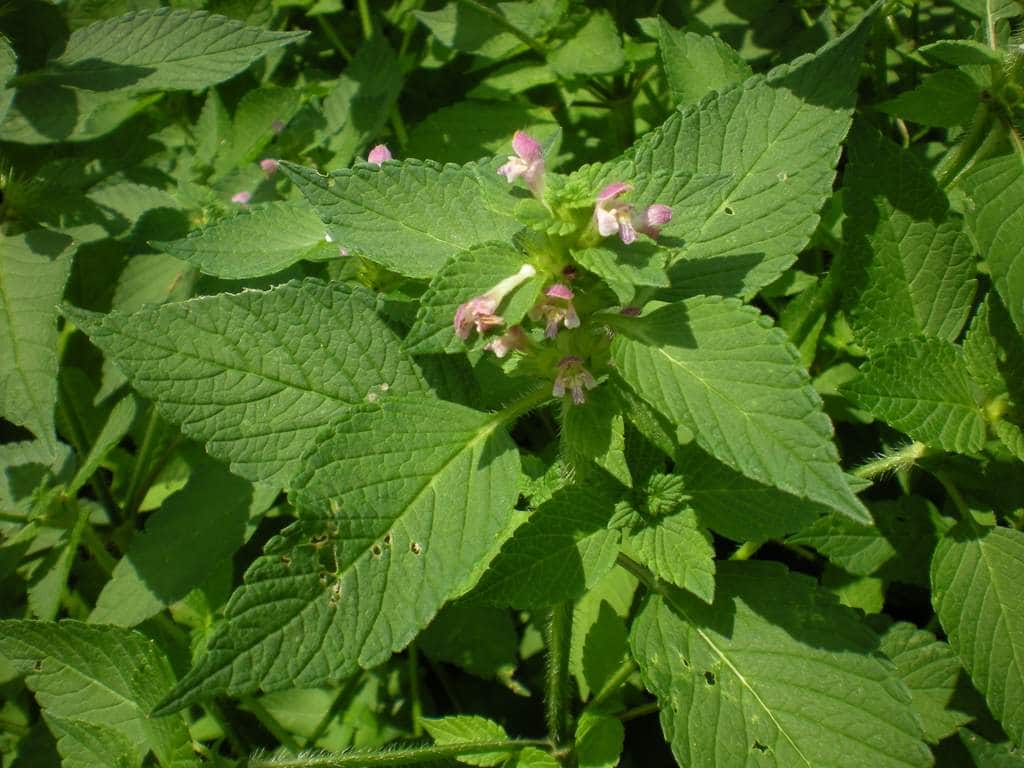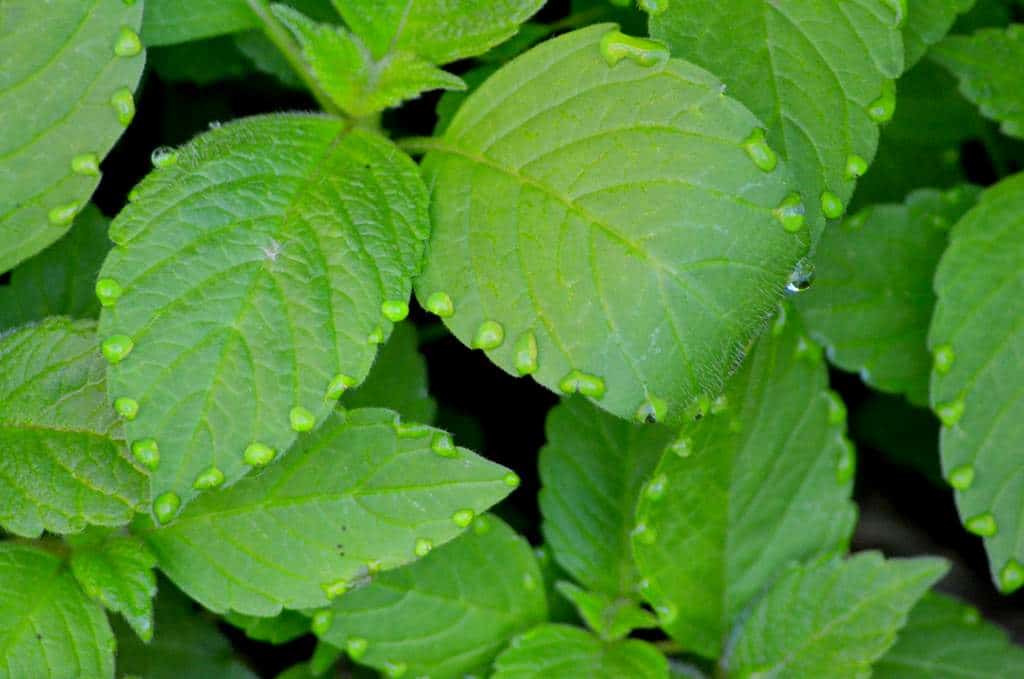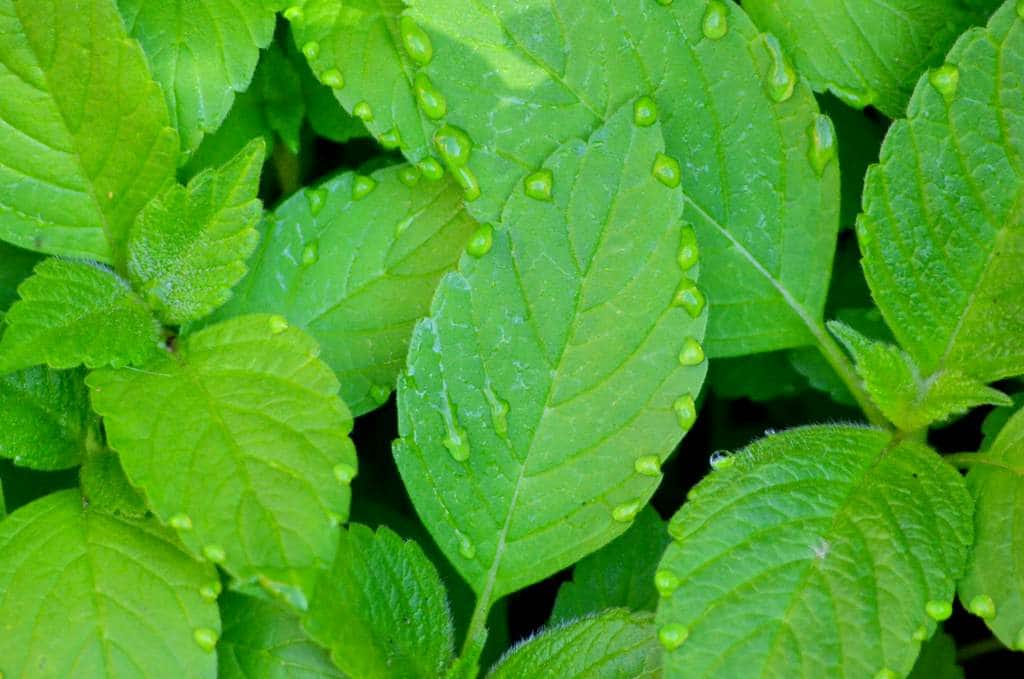Guttation in Hemp Nettle
I woke up two days ago and was pulling weeds when I noticed a very cool pattern on the hemp nettles (Galeopsis tetrahit) that surround my house. All of the hemp nettles had tiny little droplets of sap where the secondary veins terminated at the leaf margin. I’ve seen this pattern on a few different plants (e.g. strawberries, horsetails) before, and always in the morning. It can look similar to dew drops, but guttation, as it’s called, is a physiological response to soil conditions, where as dew formation is a physical process when warm moist air comes in contact with a cooler surface and water condenses out (think hot day, cool lemonade).
The Process
Guttation tends to happen at night when the soil is saturated or near saturation and the air is very humid. At night, plants close their stomata to reduce water loss (they open them to take in CO2 and release O2). When they’re open, water also evaporates out of these stomata, which one reason why drought-adapted plants tend to concentrate their stomata on the bottom of leaves, out of direct sunlight. Moisture from the soil moves into the roots of plants, giving them a slight bump in root pressure. With stomata open, a plant can offset this increase in root pressure through evapotranspiration – the movement of water through a plant caused by the evaporation of water through the stomata. Without that process, the increased root pressure squeezes the water – really a sap that contains organic and inorganic compounds out through hydathodes, specialized pores at the margins and tips of leaves. Not all plants have guttation. Trees lack it entirely, and and only a few shrubs do this (like saltbush out west), the process is mostly confined to small plants less than a few feet tall.
The Effect
One interesting side effect of guttation is its effect on insects. As the guttation drops evaporate they leave behind higher concentrations of sugars, salts, and inorganic compounds. In high enough concentrations, these can “burn” the leaf. I would assume that an added bonus of these concentrates would be a deterrant to herbivores. Honey bees, while not herbivores, die within minutes of slurping up these droplets when they form on corn grown from neonicotinoid treated seeds (link). The 2009 paper suggests a link between this and colony collapse disorder.

Hemp nettle flowers in mid-summer (Backyard, Burlington)






